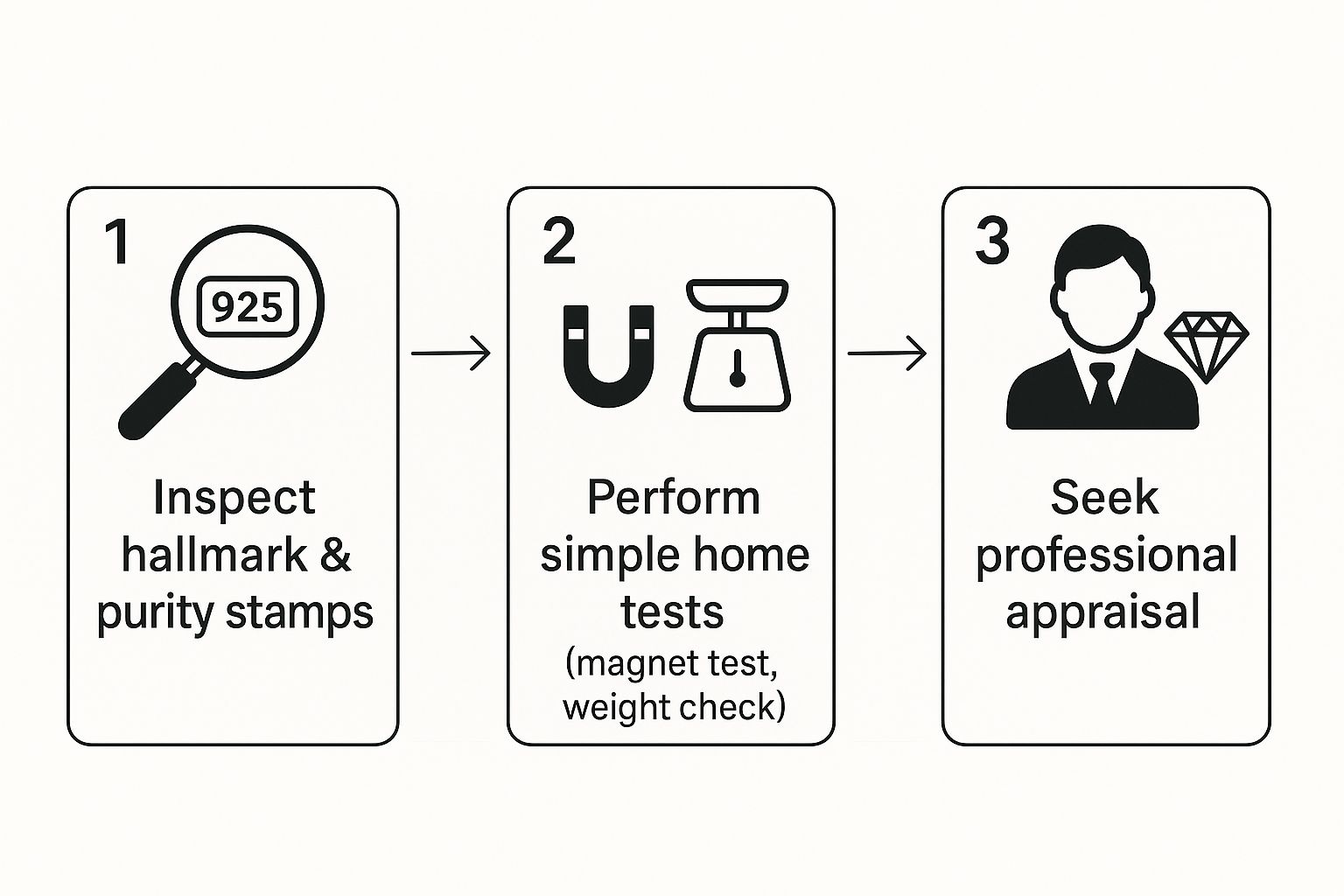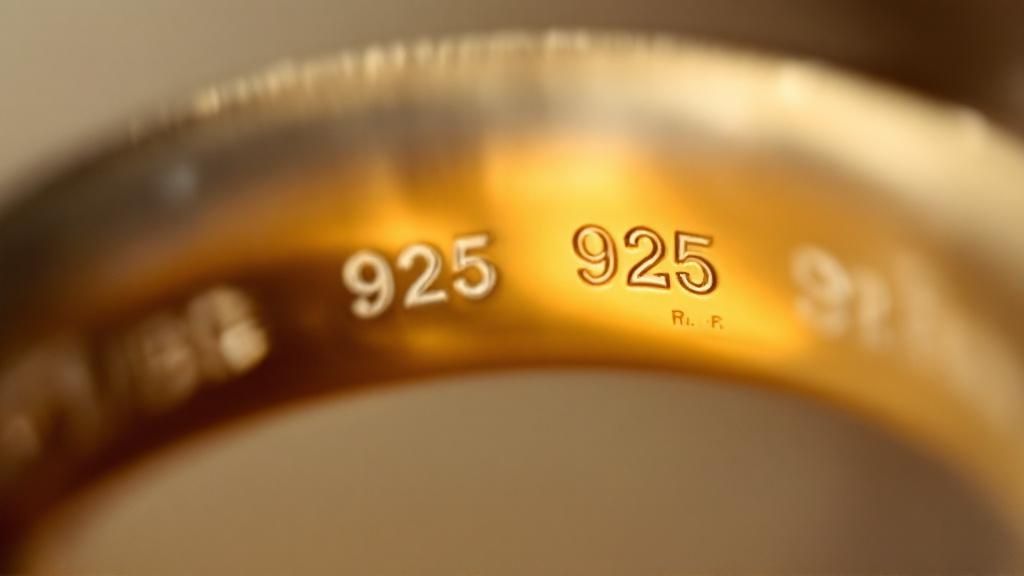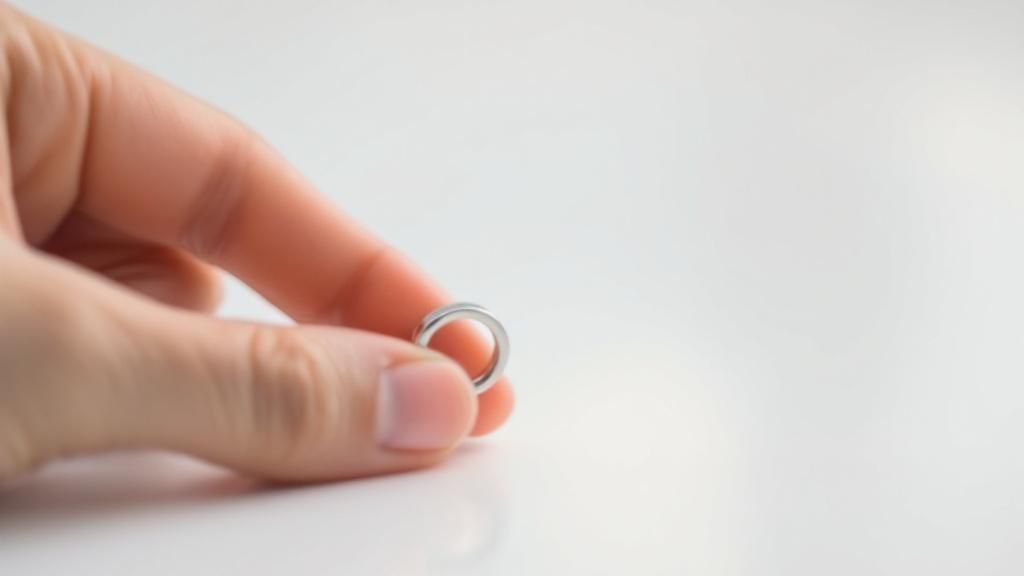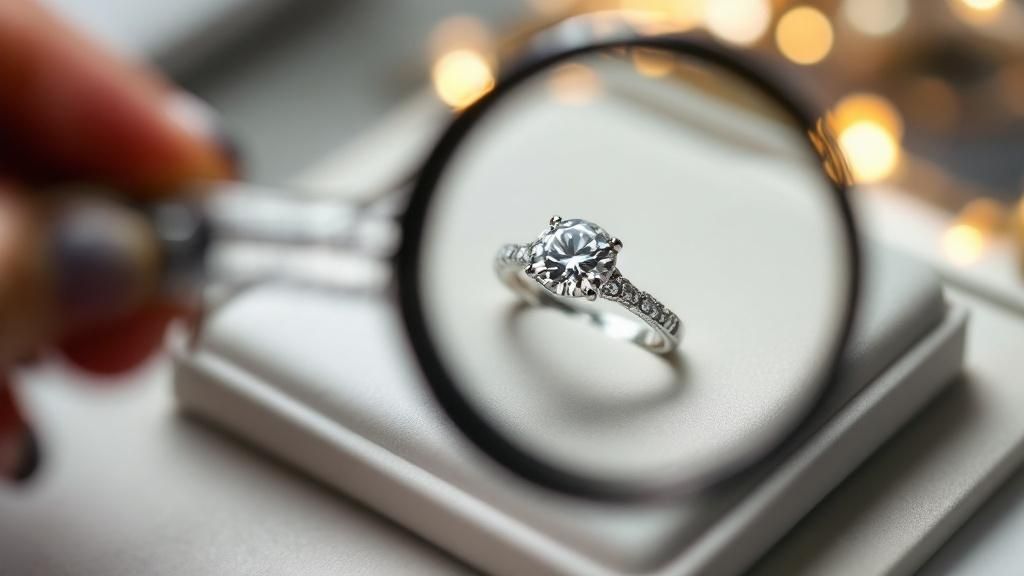How to Tell Real Jewelry From Fake
- Luke Zucco
- Aug 29
- 10 min read
The easiest way to start figuring out if your jewelry is real or fake is by checking for a few key things right at home: look for hallmarks, feel its weight, and grab a magnet. Genuine precious metals like gold and silver will have tiny stamps indicating their purity, feel heavier than you might expect, and won't react to a magnet.
Your First Look: Simple At-Home Jewelry Tests
Before you even think about bringing a piece to an expert, some of the best tools for spotting a fake are probably already in your house. A little observation and a couple of common household items can often expose an obvious imitation right away. Think of this as your first round of practical, at-home detective work to see if you're holding a treasure or just a trinket.
These initial checks don't require any special equipment, just a sharp eye for the little things that separate quality from costume.
Feel the Weight and Quality
First things first, just hold the piece. What does it feel like? Real jewelry made from solid gold, platinum, or sterling silver has a surprising density to it—it feels substantial in your hand. In contrast, a gold-plated or costume piece made from cheaper base metals like pewter or brass often feels suspiciously lightweight and even a bit flimsy.
Pay close attention to the craftsmanship. Look at the links on a chain—are they smoothly soldered, or can you see rough seams? Are the gemstones held securely by well-formed prongs, or do they look like they were quickly glued in place? Authentic, high-quality jewelry is all about precision, while fakes often have tell-tale signs of rushed, shoddy work.
The Simple Magnet Test
One of the fastest ways to check a piece is with a common magnet. I just use one from my refrigerator. Here’s the key: precious metals like gold, silver, and platinum are not magnetic.
Hold a reasonably strong magnet right up to your jewelry. If you feel any pull at all, or if it outright sticks, the piece is almost certainly made from a less valuable base metal like iron or nickel that's just been plated.
One small exception to keep in mind is the clasp. Sometimes, even on a genuine piece, the clasp will contain a tiny steel spring for durability, which might give a slight magnetic pull. The chain or main body of the piece, however, should not react.

This visual guide shows that the authentication process starts with simple observations you can make yourself, and then moves toward more definitive, expert analysis if your piece passes these initial checks.
Here's a quick summary of the simple, non-destructive tests you can perform at home to get a preliminary idea of your jewelry's authenticity.
Quick At-Home Jewelry Authenticity Tests
Test Method | What to Look For (Real Jewelry) | Red Flag (Potential Fake) |
|---|---|---|
Hallmark Check | Tiny stamps indicating purity (e.g., 14K, 925, PT950) located in a discreet spot like the clasp or inside of a ring. | No hallmark, or a stamp that looks blurry, uneven, or misspelled. |
Weight & Feel | Feels dense and substantial for its size. Craftsmanship is clean, with smooth soldering and secure settings. | Feels surprisingly lightweight, flimsy, or hollow. Visible glue, rough seams, or poorly set stones. |
Magnet Test | No magnetic pull or reaction when a magnet is held close. (The clasp may have a very slight pull.) | The piece sticks to the magnet or has a noticeable pull, indicating a ferrous base metal. |
These at-home tests are a fantastic starting point. If your jewelry passes all of them, your next step is to look closer with a bit of magnification or even consider professional appraisal for a definitive answer.
Decoding the Hidden Language of Hallmarks
Think of the tiny engravings on your jewelry as a secret language, one that tells the story of its creation. These little stamps, known as hallmarks, are your first and most reliable clue for separating real treasures from convincing fakes. They reveal a piece’s origin and, most importantly, its precious metal content.

These aren't just random symbols. In most countries, hallmarks are a legal requirement—a form of consumer protection ensuring the metal is what the seller claims it is. Learning to read them is like gaining an insider's advantage.
Common Purity Marks to Know
The first stamp you should hunt for is the purity mark. This tells you the exact percentage of precious metal in the piece. A genuine hallmark will be sharp and precise, while fakes often have stamps that look blurry, shallow, or just plain wrong.
Here's what to look for:
Gold: You'll typically see a number followed by 'K' for karat or a three-digit number representing parts per thousand. For example, '14K' means the same thing as '585' (58.5% pure gold), and '18K' is the same as '750' (75.0% pure gold).
Silver: The universal sign for sterling silver is the number '925', meaning the piece is 92.5% pure silver. Sometimes you'll just see the word 'Sterling'. To go deeper, you can explore our https://www.pantherdeluxe.com/post/european-silver-hallmarks-complete-authentication-guide.
Platinum: Look for stamps like 'PLAT', 'PT', or a number like '950', which indicates 95% pure platinum.
A missing hallmark is a major red flag. Of course, a very old or well-loved piece might have its marks worn away over time, but any modern, authentic jewelry should have a clear stamp somewhere discreet, like on the clasp or inside the ring band.
Beyond Purity: The Maker's Mark
Besides the purity stamp, you'll often find a maker's mark. This is the signature of the person, workshop, or brand that created the piece—think of the famous 'T&Co.' for Tiffany & Co.
This mark is a guarantee of accountability. For collectors and enthusiasts, a recognizable maker's mark can dramatically increase a piece's value. It provides a direct link to its history and provenance, adding a layer of authenticity that counterfeiters just can't duplicate.
That brilliant sparkle might catch your eye, but it's smart to remember that not everything that glitters is a genuine gem. Learning how to tell real jewelry from a convincing fake often boils down to knowing the subtle traits of the stones themselves. This is especially true for diamonds, which have plenty of look-alikes out there, from cubic zirconia to moissanite.
Fortunately, you don't need a lab to get some initial clues. A classic and surprisingly effective method is the fog test. Simply breathe on the stone like you're trying to fog up a mirror. A real diamond is a fantastic heat conductor, so the fog will disappear almost instantly. A fake? It'll stay fogged up for a few seconds.

This image from the Gemological Institute of America (GIA) gives you a sense of the professional standards involved in gemology. An official GIA report offers unbiased proof of a stone's identity, protecting you as a buyer and cementing the value of a genuine gemstone.
A Closer Look With a Jeweler's Loupe
To really get in there and see what's going on, a simple 10x jeweler's loupe is your best friend. It’s an inexpensive tool that reveals a world of detail, allowing you to spot tell-tale signs that separate natural stones from manufactured copies.
Here's what to look for under magnification:
Natural Imperfections: Real gemstones are born from intense heat and pressure deep within the earth, a process that almost always leaves behind tiny internal characteristics called inclusions. Seeing little specks, crystals, or feather-like lines inside the stone is actually a good sign of authenticity. Fakes, on the other hand, are often eerily perfect.
Sharp Facet Edges: Take a close look at where the flat, polished surfaces (the facets) of the stone meet. On a real diamond—the hardest natural substance on earth—these edges will be incredibly sharp and precise. Imitations are softer, so their facet edges often look slightly rounded, almost worn down in comparison.
When it comes right down to it, the ultimate proof of a gemstone’s authenticity is a certificate from a trusted gemological lab like the GIA. Think of it as your stone's fingerprint—a detailed report that confirms its identity and quality beyond any doubt.
Understanding what makes a quality diamond is key. A great place to start is learning about the fundamental 4 Cs of diamonds. For a deeper dive, our complete guide on https://www.pantherdeluxe.com/post/how-to-spot-fake-diamonds-a-complete-guide has even more tips. These simple checks and the knowledge of what to look for will help you see past the surface sparkle and make much more confident decisions.
Buying Jewelry Online Without Getting Scammed
Shopping for jewelry on the internet gives you an incredible selection, but it has one massive drawback: you can't hold the piece in your hands before you click "buy." The global online jewelry market is booming, and with that growth comes a higher risk of fakes. Learning to spot the difference between a real treasure and a clever imitation is non-negotiable when all you have are pictures and a product description.
This reality calls for a different game plan. It’s all about doing your homework on the seller and picking apart every single detail they provide.
Vet the Seller and Read the Reviews
Before you even think about adding an item to your cart, your first move should be a deep dive into the seller's reputation. Don't just glance at the star rating; get into the trenches and read what actual customers are saying.
Are the glowing reviews specific and detailed, or do they sound like they were written by a robot? Pay extra close attention to any negative feedback, especially comments that bring up authenticity problems, shoddy craftsmanship, or a nightmare return process.
A legitimate seller will have a polished, professional website, easy-to-find contact information, and a solid history. Be skeptical of anyone who only does business through social media DMs or tries to rush you with a "today only" deal that feels too good to be true.
A crystal-clear, no-questions-asked return policy is an absolute must when you're buying jewelry online. If a seller gets cagey about offering a full refund for any reason, see it as the massive red flag it is and move on.
Scrutinize the Product Listings
Think of a good online product listing as a mini-appraisal. It should give you all the critical information you'd look for if you were holding the piece under a loupe in a store.
Here’s what to demand from a listing:
High-Resolution Photos: You need to see the piece from every possible angle. Look for sharp, clear images, especially close-ups of any hallmarks, the clasp, and how the stones are set. Blurry photos or generic stock images are a deal-breaker.
Detailed Descriptions: Vague language like "gold tone" is a warning sign. A proper listing will be precise, specifying the exact metal (e.g., "Solid 14K Gold") and gemstone specifics (e.g., "Natural Sapphire, 1.2 carats").
Professional Certifications: For any big-ticket item, particularly pieces with valuable gemstones, the seller should mention—and be able to provide—certifications from respected labs like the GIA.
Applying these simple checks will help you navigate the online marketplace with a lot more confidence. For more great advice, be sure to read our [8 essential tips for buying jewelry in 2025](https://www.pantherdeluxe.com/post/8-essential-tips-for-buying-jewelry-in-2025).
When to Trust a Professional Jeweler
Those at-home tests are a great starting point, a solid first line of defense. But let's be honest—there are times when the stakes are just too high to bet on a simple magnet test or what you can see with your own eyes. Knowing when to bring in an expert is what separates a smart buyer from a disappointed one.
This is where a certified gemologist or a jeweler you trust becomes your most valuable tool.

Some situations just scream for a professional opinion. Think about that gorgeous diamond ring you inherited or a designer piece you splurged on. A formal appraisal isn't just a good idea; it's essential. The same goes for antique or estate jewelry, which often carries a history and markings that only a specialist can decipher.
When Professional Authentication Is a Must
I always tell people to head straight to an expert in these situations:
High-Value Pieces: Anything that represents a real financial investment needs an official appraisal. This gives you concrete verification and an insurable value, which you’ll be thankful for later.
Antique or Estate Jewelry: Older pieces are notorious for having worn-down hallmarks or obscure maker's marks. An expert has the historical knowledge to identify them correctly.
Unclear or Missing Hallmarks: Can't find a stamp? Or is the one you see just a smudge? A professional can test the metal’s purity using methods that won't leave a mark.
Major Gemstone Identification: Telling a natural sapphire from a lab-grown one, or a real ruby from a really good fake, often requires specialized gemological tools you just don't have at home.
A true professional doesn't guess. They use advanced equipment to get you a definitive answer. For example, an X-ray fluorescence (XRF) scanner can give a precise breakdown of a metal's elemental composition in seconds, confirming its purity without a single scratch.
This kind of certainty is more critical than ever, especially with the explosion of counterfeit luxury goods. The global market for luxury authentication services is booming, valued at around USD 1.72 billion and on track to hit USD 6.50 billion. As you can see in this market analysis on DataIntelo.com, people are demanding proof in a market flooded with sophisticated fakes.
Ultimately, going to a pro buys you peace of mind. Their expertise doesn't just tell you if your jewelry is real—it gives you a certified document to prove it. That piece of paper is what protects your investment and its value for years to come.
Common Questions About Jewelry Authentication
When you're trying to figure out if a piece of jewelry is the real deal, a lot of questions can pop up. It's completely normal. Getting solid answers is the first step toward understanding the value of what you have and making smarter buys in the future. Think of it as building your confidence to spot fakes.
Let's dive into some of the questions I hear most often from people trying to authenticate their jewelry.
Are Online Acid Test Kits Safe to Use?
You've probably seen those gold testing kits online that come with little bottles of acid. While they can work, I generally advise against using them yourself. That acid is seriously corrosive.
One slip-up can leave a permanent, ugly mark on your jewelry. It's especially risky with plated items—the acid can burn right through that thin gold layer and reveal the cheap metal underneath, ruining the piece for good. If an item has any sentimental or monetary value, please, just take it to a professional jeweler. They have the right tools and, more importantly, the experience to do it safely.
Does a 'Made in Italy' Stamp Guarantee Real Gold?
This is a great question. Seeing "Italy" stamped on a piece feels promising, right? Italy is famous for incredible craftsmanship, but that stamp only tells you where it was made, not what it's made of.
It's a positive sign, but it's not the proof you're looking for. The real confirmation comes from a separate hallmark indicating the metal's purity. You need to find a stamp like '750' (for 18K gold) or '925' (for sterling silver) alongside the country of origin mark. That's your guarantee.
The setting itself is one of the biggest giveaways. Real diamonds are incredibly valuable and are almost always set in precious metals like solid gold or platinum. If you see a stone in a flimsy, poorly made setting stamped with something like 'C.Z.' or no precious metal mark at all, you can be almost certain it's an imitation.
When I look at a piece, I also check the facet edges under a loupe. A real diamond has sharp, precise edges. Fakes, being softer, often look a bit rounded or worn down. Honestly, though, a poorly made setting is usually the first and most obvious red flag.
At Panther De Luxe Shop, we believe in the beauty and integrity of authentic, high-quality jewelry. Explore our curated collections to find your next genuine treasure.

Comments